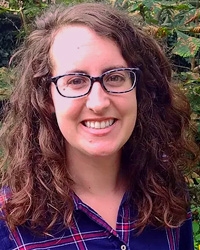Organic Matter Source and Preservation within the Late Cretaceous Niobrara Formation, U.S. Western Interior
Presenter
Dr. Allyson Tessin, Marie Curie Research Fellow
School of Earth and Environment, University of Leeds
Abstract
The Cretaceous period (145−66 million years ago) was characterized by elevated atmospheric pCO2 and an equable, warm climate. High Cretaceous sea levels flooded continental areas producing extensive shallow seaways, including the Western Interior Seaway (WIS) in North America. The resulting sedimentary record of the WIS includes episodic deposition of organic carbon-rich black shales, including the Coniacian-Santonian Niobrara Formation, that now represent important petroleum resources. Multiple processes control marine black shale deposition, including changes in primary productivity, organic matter preservation, and sedimentary dilution. A combination of traditional inorganic and organic geochemical proxies with novel trace metal molecular geochemistry indicate changes in the source and preservation of organic matter within the Niobrara Formation. Comparison of records of organic carbon burial and deoxygenation from Colorado, Kansas, and Alberta highlight both local and regional drivers of increased sedimentary carbon burial.
